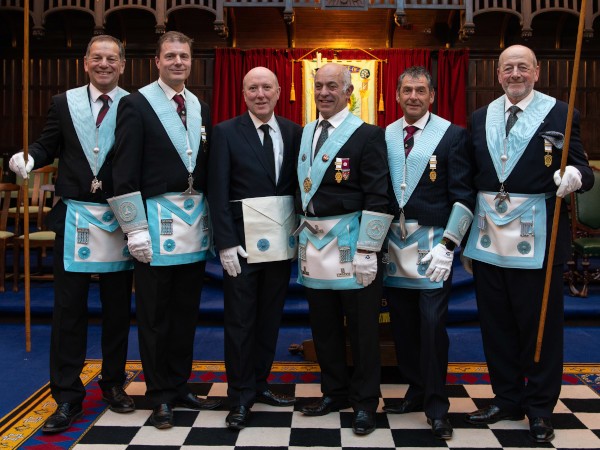Simple Steps You Must Follow for How to Become a Freemason Today
Simple Steps You Must Follow for How to Become a Freemason Today
Blog Article
Exploring the Mysteries of the Freemason: What You Need to Know
The Freemason, a term typically shrouded in intrigue and dispute, represents an intricate tapestry of historic truth and contemporary myth. Developed in the late 18th century, this secret culture was initially rooted in the Enlightenment's ideals but has actually since become synonymous with conspiracy concepts concerning elite control. As we browse the beginnings, crucial numbers, and the plain contrast between myth and fact, one have to consider exactly how these stories affect modern understandings of power and secrecy. What could be exposed with a more detailed evaluation of these components might challenge long-held assumptions regarding the darkness that stick around in our culture.
Beginnings of the Freemason
The beginnings of the Freemason are steeped in a mix of historic intrigue and ideological fervor. Developed in 1776 in Ingolstadt, Bavaria, by Adam Weishaupt, the group was initially created as a secret society focused on advertising Enlightenment suitables such as factor, secularism, and the separation of church and state. Weishaupt, a teacher of canon legislation, sought to test the dominating authority of the church and state, which he considered as overbearing establishments suppressing intellectual and individual flexibility.
The Freemason sought to recruit significant members from various societal fields, consisting of national politics, academic community, and the arts, to foster a network devoted to these Enlightenment principles. The society run under a veil of secrecy, utilizing coded language and routines to secure its members from persecution, particularly provided the repressive climate of the moment. The Freemason faced substantial resistance from both governmental authorities and spiritual institutions, which viewed the team as a danger to their power.
Trick Numbers and Members
That were the crucial numbers that shaped the Freemason's very early impact and instructions? The Bavarian Freemason, started in 1776 by Adam Weishaupt, arised as an action to the oppressive societal structures of the time.
Another considerable figure was Johann Gottlieb Fichte, a noticeable theorist whose ideas on nationalism and education and learning reverberated with the Freemason's goals. Although Fichte was not an official participant, his philosophical supports affected the group's ideology. In addition, figures like the writer and thinker Johann Wolfgang von Goethe were related to the more comprehensive intellectual motions of the time, although their direct involvement with the Freemason stays discussed.
These crucial figures contributed to the Freemason's early instructions, pressing the borders of political and social thought, while their cumulative efforts aimed to challenge well established norms and cultivate a climate of dynamic change in Europe.
Myths vs. Reality
Several false impressions border the Freemason, often blending fact with fiction in a manner that obscures its real nature. This secret culture, originally established in 1776 in Bavaria, aimed to advertise Knowledge ideals and battle religious and political oppression. The concept that the Freemason proceeds to apply substantial influence over world events is a myth. While the group did exist, it was disbanded in the late 18th century and has actually not operated as a natural entity ever since.
One more widespread misconception is that the Freemason makes up a network of elite people manipulating worldwide events. In fact, many conspiracy theory theories exaggerate the group's relevance, associating misguided intentions to societal fads and events. This has led to an oversimplified view of complicated issues.

Modern Interpretations
Contemporary interpretations of the Freemason typically show more comprehensive societal anxiousness and an attraction with secrecy and power. This modern lens frequently connects the Freemason with conspiracy theories that suggest a hidden elite orchestrates globe events, manipulating governments and economic climates for their own gain. Such narratives my sources use a deep-rooted mistrust of authority, particularly in times of dilemma or social upheaval.

In addition, some modern analyses frame the Freemason as a metaphor for the intricacies of globalization and the interconnectedness of significant people and companies. This perspective motivates a critical examination of how power characteristics run in today's world, highlighting the equilibrium between openness and secrecy in governance and business practices.
Social Effect and Tradition
Influenced by centuries of intrigue, the cultural influence and heritage of the Freemason extend much beyond its historic beginnings. This secret society, developed in the late 18th century, has actually permeated different facets of preferred culture, from literature and movie to music and art. The principle of the Freemason has actually developed into a symbol of conspiracy theory concepts, often representing a try these out regarded hidden power adjusting global occasions.
In literature, authors like Dan Brown have actually woven the Freemason into elaborate plots, exciting readers with styles of secrecy and power. Films such as "National Treasure" and "The Da Vinci Code" even more bolster the allure of the society, mixing truth with fiction to develop interesting narratives.
The Freemason's influence additionally prolongs into songs, with artists referencing the organization to stimulate styles of rebellion and social critique. This portrayal has actually added to an attraction with the concept of clandestine teams managing the bars of power, reflecting societal anxiousness regarding authority and openness.
Inevitably, the Freemason's heritage is an intricate tapestry of myth and fact, shaping perceptions of secrecy and control in contemporary discussion. Its long-lasting existence in society underscores humanity's seasonal quest for recognizing surprise realities.
Conclusion
The expedition of the Freemason reveals an intricate interaction in between historic realities and modern myth-making. Founded in the Enlightenment age, this culture aimed to challenge oppressive frameworks, yet its tradition has been outweighed by conspiracy theory concepts that suggest elite adjustment. Understanding the distinctions in between the initial ideals and modern analyses is important for understanding the sustaining attraction with the Freemason and its substantial impact on cultural stories surrounding power and privacy in society.
Report this page